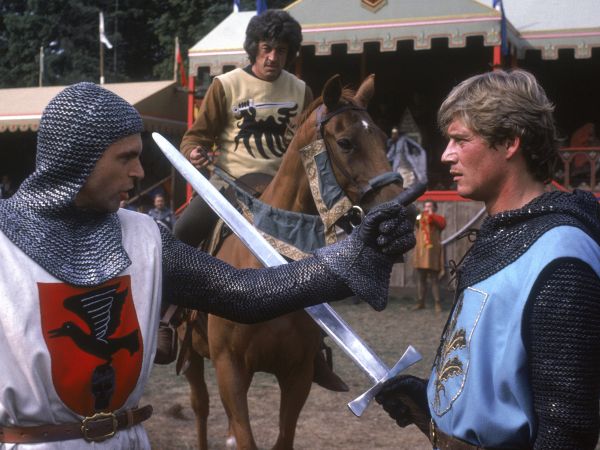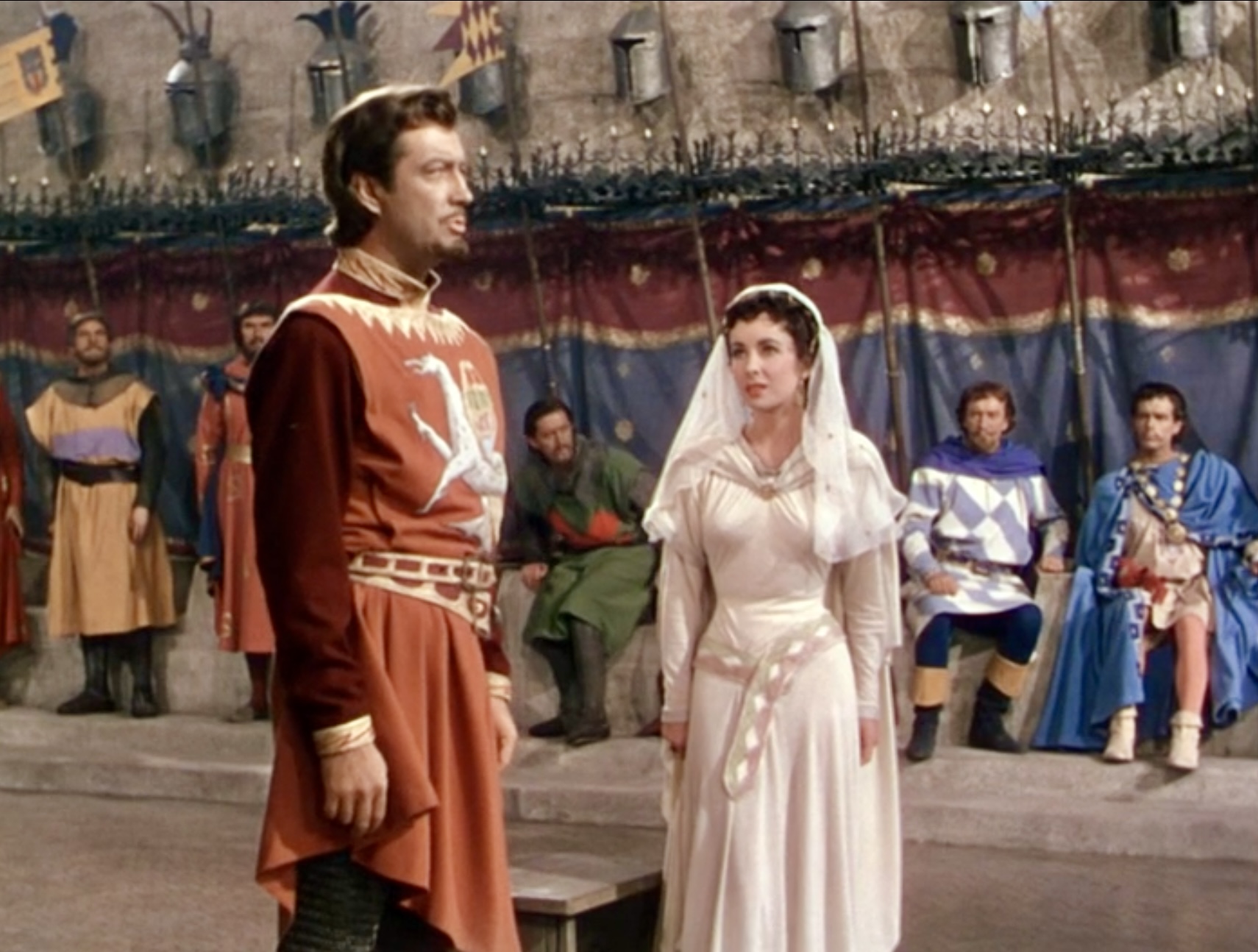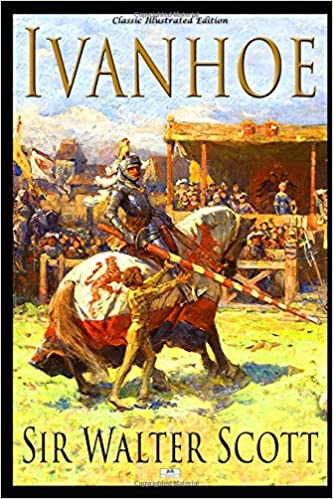Don't miss your chance to invest in 'Fabiola'!
Visit our crowd-funding page for our new production, "Fabiola"!
- Home
- Books Made into Movies
- Ivanhoe
Ivanhoe Film Adaptations That Hit The Mark And Those That Miss
Disclaimer: As an Amazon Associate, I receive a small commission if you purchase items on this page at no extra cost to you.
"If I were born to your race, I would keep you and treasure you for the rest of my life. One life. That's all that God will give us. We are not destined to share it." -Ivanhoe's words to Rebecca
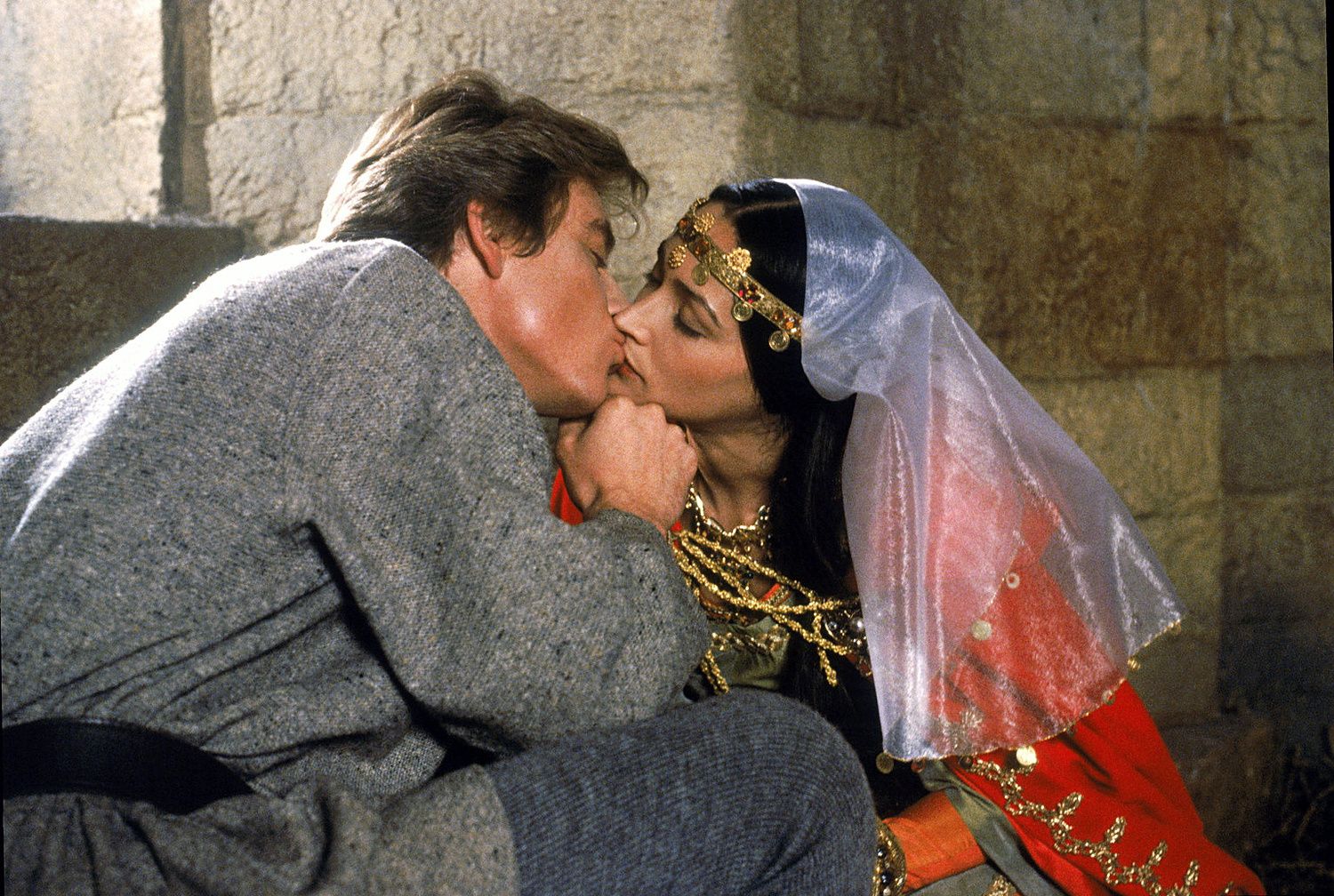 Anthony Andrews as Ivanhoe with Olivia Hussey as Rebecca in the 1982 made for TV version of Ivanhoe | Columbia Pictures
Anthony Andrews as Ivanhoe with Olivia Hussey as Rebecca in the 1982 made for TV version of Ivanhoe | Columbia PicturesIvanhoe by Sir Walter Scott is a classic tale set in the High Middle Ages, filled with jousting tournaments, kings in disguise, and damsels in distress. It also marks the first literary portrayal of Robin Hood, making it a must for lovers of historical adventure.
Our favorite adaptation is Columbia Pictures' 1982 TV version, featuring a familiar cast and plenty of action to keep viewers on the edge of their seats. BBC made a 1970 four hour version that faithfully follows the book down to the most minute details. The 1952 Elizabeth Taylor adaptation misses the target in a big way. Read on to find out why.
Ivanhoe Film Adaptation: A Riveting 1982 TV Classic of Heroism, Romance, and Rivalry
In this Ivanhoe film adaptation, Sam Neill gives a standout performance as the conflicted Templar knight, Sir Brian de Bois-Guilbert, a villain whose passions get the best of him. Anthony Andrews takes on the role of Wilfred of Ivanhoe, the disinherited knight and hero of the story, delivering a strong performance despite the fact that he reportedly didn’t favor the role. Olivia Hussey, John Rhys-Davies, Julian Glover, and James Mason round out the cast, bringing depth to their roles in this thrilling medieval adventure interwoven with romance.
Set during the reign of King Richard the Lionheart (Julian Glover), who is being held captive after the Third Crusade, Ivanhoe takes place at a time when Prince John (Ronald Pickup) is attempting to usurp the throne. As Prince John revels in his brief rule, the appearance of Wilfred of Ivanhoe at a jousting tournament raises concerns in court, signaling Richard’s possible return to England.
Ivanhoe’s primary mission is to win back the favor of his estranged father, Cedric (Michael Hordern), who disowned him for his loyalty to King Richard, viewed as a betrayal of the Saxon cause. At the same time, Ivanhoe hopes to claim the hand of Lady Rowena (Lysette Anthony), Cedric’s ward, though Cedric has other plans for her—wanting her to marry a descendant of King St. Alfred the Great in order to strengthen Saxon line.
While Ivanhoe remains devoted to Rowena, fate intervenes when he encounters the beautiful Jewess Rebecca (Olivia Hussey), whose courage and compassion save his life. Though Ivanhoe and Rebecca’s love is doomed because she is an infidel, their relationship forms a pivotal part of the story. Despite his engagement to Rowena, Ivanhoe risks honor and human respect to rescue Rebecca when she is kidnapped by his rival, Sir Brian de Bois-Guilbert, who desires her to deign to be his concubine.
This 1982 Ivanhoe film adaptation closely follows the original novel, though it pleasantly enhances the romance between Ivanhoe and Rebecca.
Ivanhoe Film Adaptation: MGM's 1952 Version Falls Short
Metro-Goldwyn-Mayer's 1952 Ivanhoe film adaptation, starring Robert Taylor as Ivanhoe and Elizabeth Taylor as Rebecca, has a promising beginning by starting with a scene that is left out in the 1982 version but then falls short. While the cast is strong, the film struggles to capture the emotional depth and heroic qualities that define the original story.
One major issue is the portrayal of Sir Brian de Bois-Guilbert (George Sanders), who unintentionally comes across as more heroic and complex than Ivanhoe himself. This imbalance detracts from the protagonist’s development and shifts the focus away from the film’s central hero.
Additionally, Elizabeth Taylor’s portrayal of Rebecca is poor, as she willingly accepts the templar's advances in order to save the life of Ivanhoe. Her sympathy for Sir Brian’s evil desires undermines the entire story. The romantic tension between Ivanhoe and Rebecca is diminished, as she ultimately ties her fate to Sir Brian, leaving their connection forgettable and unsatisfying.
In the end, this Ivanhoe film failed to hold the audience as it is both unfaithful to the original and lacks emotional-depth.
Ivanhoe By Sir Walter Scott Sheds Light On The Inner Strife Between The Victorious Normans And The Conquered Saxons
Returning home from the Crusade and representing the return of the faithful followers of King Richard is Wilfred of Ivanhoe, the disinherited son of a Saxon thane. His father calls him disobedient; his childhood love, Rowena, is to be married off to his kinsman; his king is a captive in Austria; he returns home after a failed crusade—Ivanhoe seems to experience a weakness of circumstance, though not of character.
Under all these hardships, Ivanhoe consistently shows a chivalrous and noble character. He is not the dashing rough knight that many imagine Middle Age heroes to be, rather he is the simple, boyish hometown hero.
On the other hand, it is the nemesis, Sir Brian de Bois-Guilbert, whose fame has proceeded him. Ivanhoe and de Bois-Guilbert finally come head to head when Brian mingles another’s innocence with his villainy.
Sir Brian de Bois-Guilbert is proud, arrogant and a man of reckless passions. Though a member of the religious order of Templars, he is a picture of how that order was during those medieval times: worldly.
Brian challenges Ivanhoe in a tournament to see who is the better man of arms. After Ivanhoe defeats and humiliates him, the two “stand upon terms of mortal defiance.”
Bois-Guilbert desires to be promoted to a high position in his order but he is intent on having the Jewess Rebecca return his affections. He is willing to throw away all his dreams for her, but her final refusal leaves him mortified and dejected.
Rebecca is the beautiful daughter of a wealthy Jew. Sir Brian de Bois-Guilbert has decided that a woman so beautiful and high spirited must be his. Ivanhoe himself pays some attention to Rebecca but on discovering that she is a Jew, he fosters a collected and cold manner toward her.
“Ivanhoe was too good a Catholic to retain the same class of feelings toward a Jewess.”
For Ivanhoe and Sir Brian, Rebecca is the embodiment of Jerusalem for which they both have fought to free. She personifies Jerusalem as the irresistible but unreachable goal of chivalric quest.
When Rebecca’s innocence is on the line, she will demand a champion to defend her and it is Ivanhoe who will defy Sir Brian.
The historian, Anne Carroll, once noted that King Richard acquired all his parents’ good traits while Prince John inherited their bad traits. King Richard displays a “careless gaiety and fearless confidence”. He is “one whose trade was war and adventure.”
Prince John, on the other hand, is described as “light, profligate and perfidious”. He wants to keep Richard away as long as possible in order to take over the throne, but he cannot carry out the scheme without the help of several villainous Normans.
For some it may be near impossible to read Ivanhoe and not imagine Richard as the tall, manly lion and John as the slightly feminine kitten as portrayed in the Disney cartoon. The cartoonist most certainly took their character makeup from Scott’s Ivanhoe.
Ivanhoe is a well written, true to life historical novel that is thoroughly enjoyable because of the interesting historical era in which it is set. In modern time, we often do not experience examples of chivalry that were so apparent among gentlemen in medieval times.
We say that a firefighter or a police officer is brave but we are unaccustomed to men firmly performing their duties to God, to fellow men and to their country.
The men of the Middle Ages knew who they were, knew where they had been and knew what God meant to them. Facing death and fighting for what they believed in was a way of life for them.
Share your thoughts on the Ivanhoe film adaptations: Which version captured the magic?
Whether you enjoyed the chivalrous adventures of the 1982 TV adaptation or preferred the classic feel of MGM's 1952 version, we'd love to hear your thoughts on the Ivanhoe films!
Did a particular character stand out to you?
Were there any moments that captured the spirit of Sir Walter Scott's novel?
Share your favorite scenes, critiques, or anything else you'd like to weigh in on about these or other Ivanhoe film adaptations in the comments below. Let's keep the conversation going!
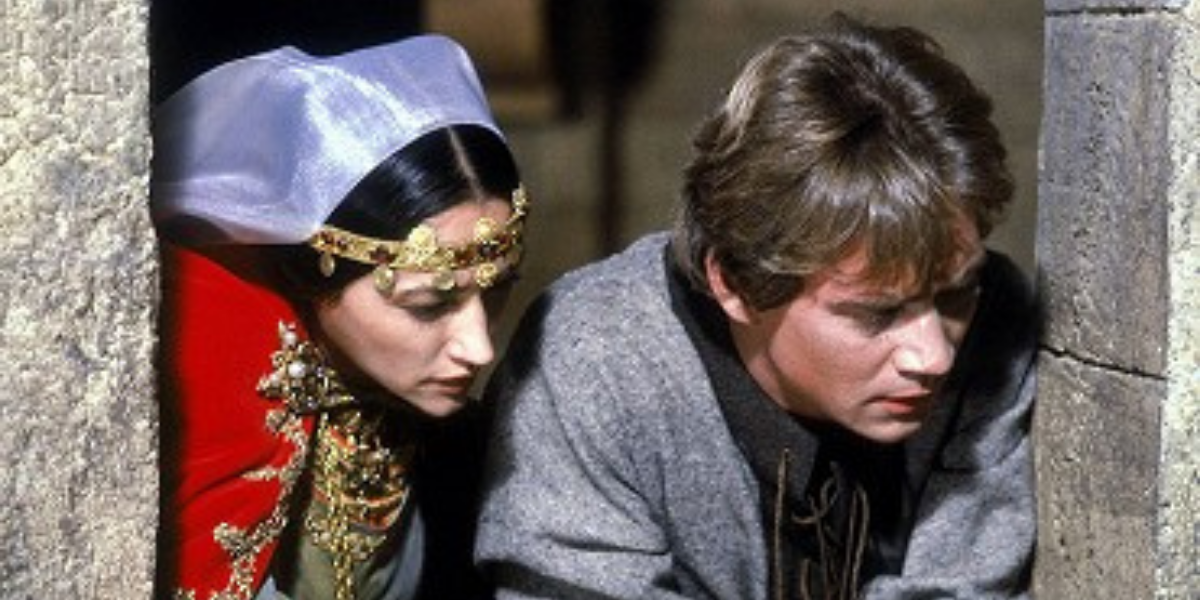
By becoming an Industrious Family Films Sponsor you directly support the movement which is rebuilding Christian art.
I'd like to advertise with Industrious Family.
Subscribe To Our FREE Email Newsletter:
Awards:


#RebuildChristianArt Blog
An aid for families encouraging the reconstruction of the social fabric by sparking interest in Christian art and culture. Find beautiful novels, films, music, food and customs.
